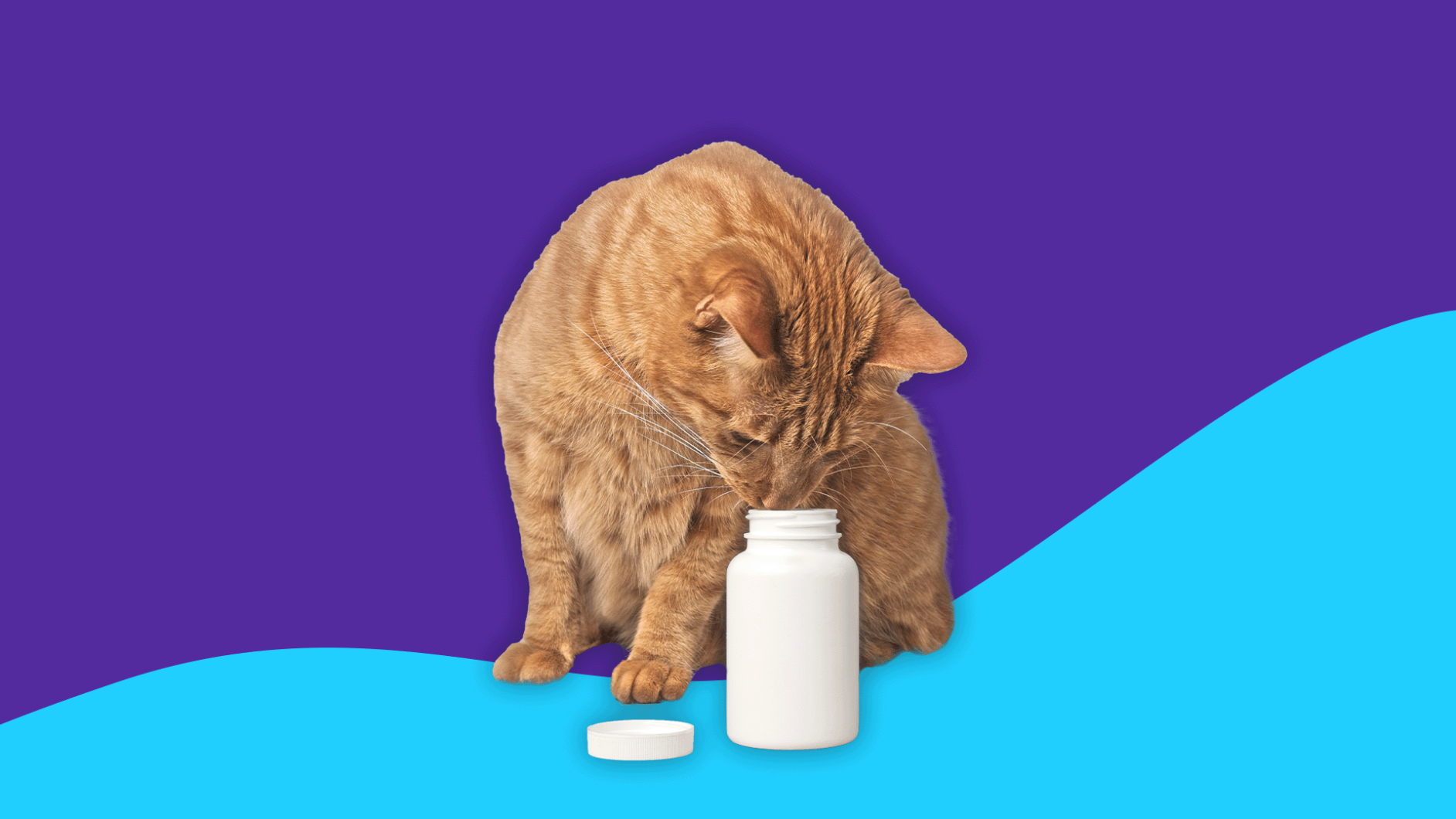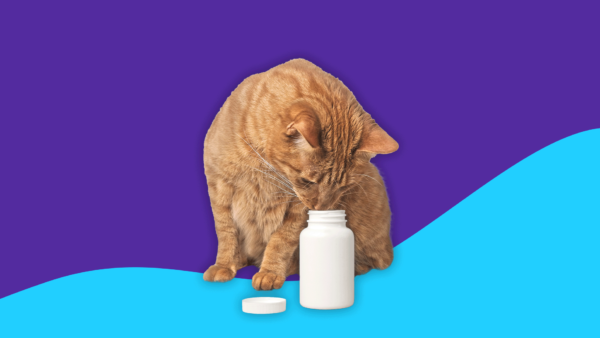Has your cat been having diarrhea for a while? As a pet owner, this can be a lot of trouble. When you’ve tried your best to control it without getting results, that’s when antibiotics become an integral component of pet care. Among the go-to treatments is using metronidazole for cats to treat gastrointestinal infections like diarrhea.
Metronidazole is an antibiotic and antiprotozoal sold under the brand name Flagyl and prescribed to humans and their pets. It treats bacterial infections caused by anaerobic bacteria (bacteria that thrive in the absence of oxygen), microaerophilic bacteria (bacteria that thrive in low-oxygen environments), and protozoa such as giardia.
Since medications can work differently for animals and humans, you should learn how to use this antibiotic properly. When treating your cat’s gastro issues with metronidazole, here’s what to know about how it works, how to administer it to your pet, potential side effects, drug reactions, and when to avoid it.
What is metronidazole used for in cats?
In humans, metronidazole is FDA-approved for treating certain bacterial infections. It diffuses into the offending microorganism, disrupting cell growth and division and eventually causing cell death of the microorganism. Although not FDA-approved for animals, metronidazole is used off-label in cats when prescribed in veterinary medicine.
“Metronidazole is commonly prescribed for gastrointestinal issues such as diarrhea, inflammation of the intestines, or certain types of infections caused by bacteria or parasites,” says Maria Baker, DVM, founder of Pet-How. She says metronidazole is a viable treatment option for a cat with no previous adverse reactions to the antimicrobial medication.
Metronidazole treats anaerobic bacterial infections caused by normal bacteria living in their body. Usually, this bacteria is harmless but can cause infections after an injury or when deep tissues are exposed in open wounds. Symptoms of anaerobic infections include fever, loss of appetite, wounds taking much longer to heal, and oozing pus.
The antibiotic also treats giardia infections. Giardia is a protozoal infection of the gastrointestinal tract that causes diarrhea and is spread between cats through ingestion of infected fecal material. A 2004 study found that administering 25 mg/kg of metronidazole twice a day for seven days was effective and safe for stopping the shedding of giardia cysts in cats.
Other potential uses of metronidazole in cats include treating inflammatory bowel disease (IBD), protozoal infections (parasites), periodontal disease (infections affecting teeth and gums), skin and soft tissue infections, and Helicobacter species infections (gastrointestinal infections caused by the bacteria helicobacter pylori).
Metronidazole dosage for cats
Metronidazole comes in many forms, including tablets, capsules, liquid suspensions, and injectables. There’s also a powdered form known as metronidazole benzoate, which is less bitter than the original metronidazole and may be compounded with flavoring to be easier to administer to your cat.
Veterinarians consider several factors when determining the appropriate metronidazole dosage for your cat, according to Sara Ochoa, DVM, a provider at Animal Hospital of West Monroe and co-founder of howto-pets.com. They look at weight, the specific condition, the individual cat’s health profile, its response to treatment, and the duration of therapy.
The recommended dosage of metronidazole ranges from 10 to 30 mg per kg of body weight. It’s administered by mouth or intravenously every 12 hours.
How to give metronidazole to your cat
Metronidazole must be taken with food to reduce the risk of side effects. Dr. Ochoa recommends the following methods for administering the medication to your cat:
- For tablets, crush it into a powder and mix it with a small amount of wet food. Or, use a pill dispenser designed for pets to safely place the tablet at the back of your cat’s throat without causing discomfort. Ensure your cat swallows the medication and doesn’t spit it out. If your cat has trouble swallowing pills, ask your veterinarian if a liquid formulation is available.
- In liquid form, a syringe helps you measure the correct dose. The dosage depends on the concentration of the liquid suspension. To make it more appetizing, mix the prescribed amount of metronidazole into a small amount of wet food or a treat. Ensure your cat consumes the entire mixture to receive the correct dose of metronidazole.
- A compounded medication is excellent for cats who refuse to eat food mixed with the medicine or become uncooperative. Ask your veterinarian for a more palatable and cat-friendly form, such as a flavored liquid or a specially made treat formed from the medication.
- Metronidazole can also be administered via intravenous injection by a veterinarian when oral administration is not feasible or in more severe cases. In this case, your cat will need to stay in the hospital to have the medication administered.
How quickly metronidazole works depends on the cat and the severity of the infection, says Dr. Ochoa. “In general, the medication starts to take effect within a few hours to a few days after starting the treatment,” she says. Chronic conditions like IBD can take longer to improve, up to a few weeks.
“It’s important to complete the full course of treatment as prescribed by the veterinarian—even if the cat’s symptoms seem to have resolved,” Dr. Ochoa says. “This is to ensure complete eradication of the infection and prevent relapse.”
Side effects of metronidazole for cats
Because of its bitter taste, metronidazole can trigger minor side effects in cats such as salivation, drooling, gagging, or frothing at the mouth. Occasionally, Dr. Ochoa says the antibiotic can cause more adverse effects, including:
- Gastrointestinal upset. This may include symptoms such as nausea, vomiting, diarrhea, and inappetence. While uncomfortable, these side effects are usually mild and often resolve independently after a few days.
- Neurological effects. In rare cases, high doses and prolonged use of metronidazole can cause tremors, disorientation, abnormal gait, nystagmus (abnormal eye movements), and even seizures. If you notice any unusual behavior or twitching during your pet’s treatment, it’s crucial to contact your veterinarian immediately for further guidance.
- Allergic reactions. Watch for clinical signs such as facial swelling, hives, itching, or difficulty breathing, and report to your veterinarian.
- Low white blood cell count. A decrease in white blood cell count is rare but occurs in some pets. White blood cells play a vital role in fighting infections, so a lowered count can potentially reduce the immune system’s ability to ward off diseases. Regular blood tests can help monitor your pet’s white blood cell count during metronidazole treatment.
- Increased liver enzymes. In some cases, metronidazole use can temporarily raise liver enzyme levels in dogs and cats. Monitoring liver function through blood tests is usually recommended, particularly if your pet takes metronidazole over an extended period.
It usually takes 24 to 48 hours for metronidazole to leave your cat’s system after the last dose of the antibiotic. However, Dr. Ochoa says that factors like the cat’s metabolism, age, and overall health can influence how quickly the medicine clears from the body.
Is Metronidazole safe for cats?
Metronidazole benzoate was found to be safe for cats with a giardia infection when administered orally twice daily for seven days. The researchers recorded no signs of drug toxicity in the cats. However, experts emphasize the need to identify the cause of the diarrhea. For example, to avoid worsening diarrhea, you should identify giardia cysts in stool samples before administering antibiotics like metronidazole.
Drug toxicity may occur when metronidazole is administered at higher doses than recommended or over a prolonged period. An older study demonstrated signs of neurological disorder, especially generalized seizures, when a cat’s metronidazole dosage increased to 222 mg per kilogram of weight daily. Another cat that received metronidazole dosed at 58 mg per kilogram for six months started to experience difficulties in balance and walking and changes in mental function. In the studies, both cats recovered after hospitalization and drug withdrawal.
Does metronidazole interact with other medications?
Be sure to inform your veterinarian about all medications you give your cat so they can advise you on possible interactions. Metronidazole is less effective when administered with anti-epileptic medications, such as phenobarbital and phenytoin. When taken together, the cat’s system will metabolize the antibiotic faster and remove it from the body before it can take full effect.
When taken with cimetidine, an antacid, there’s an increased risk of possible side effects of metronidazole and the dose may need to be altered, or an alternative acid reducer explored. Taking metronidazole with cyclosporine, an immunosuppressant, may increase the risk of side effects of cyclosporine since it can raise levels of cyclosporine in the body.
If your cat is taking warfarin, Dr. Baker says metronidazole can inhibit the metabolism of the drug, leading to increased levels of warfarin in the bloodstream. “This can result in an enhanced anticoagulant effect of warfarin, potentially leading to an increased risk of bleeding,” she says. Monitor your cat closely for any signs of bleeding, such as nosebleeds, bruising, and blood in the urine or stool, when they take both medications.
When should metronidazole be avoided in cats?
There are times when metronidazole may not be suited for your cat. Dr. Baker says this includes when a cat has known sensitivity or previous adverse reaction to metronidazole. Additionally, if the cause of the diarrhea is unclear or other underlying health conditions are present, she adds that metronidazole may not be the most suitable choice.
Metronidazole is secreted in breast milk and is not suitable for nursing cats and even young kittens. It should be avoided in pregnant cats because it may cause congenital disabilities. If your cat has been diagnosed with liver or kidney problems, an alternative medication may need to be used.
If your cat doesn’t respond to metronidazole therapy, there are other lifestyle adjustments to incorporate, like dietary changes. “Try feeding your cat a bland diet consisting of easily digestible foods such as boiled chicken or plain cooked rice,” Dr. Baker says. “This [diet] soothes the digestive system and provides some relief.” Adding in probiotics can also help restore healthy gut bacteria. Finding the underlying cause of the diarrhea with fecal testing is also important to make sure other intestinal parasites and other diseases are ruled out.
Dr. Baker also stresses the importance of hydration for “managing diarrhea and preventing dehydration.” Notify your veterinarian for clinical guidance if treatments fail or if you notice signs suggestive of metronidazole toxicity.
Sources
- Metronidazole, StatPearls (2023)
- Anaerobic Bacterial Infections in Cats, chewy.com (2009)
- Metronidazole for the treatment of feline giardiasis, Journal of Feline Medicine and Surgery (2004)
- Metronidazole (Veterinary — Systemic), The United States Pharmacopeial Convention (2007)
- Rethinking the role of metronidazole in veterinary medicine, Innovative Veterinary Care (2021)
- Diarrhea in Kittens, Elsevier (2009)
- Metronidazole neurotoxicosis in two cats, Journal of the American Animal Hospital Association (2001)
- Metronidazole for Dogs, Cats, and Horses, Wedgewood Pharmacy (2022)
- Cylcosporine – Oral, VCA Animal Hospitals











